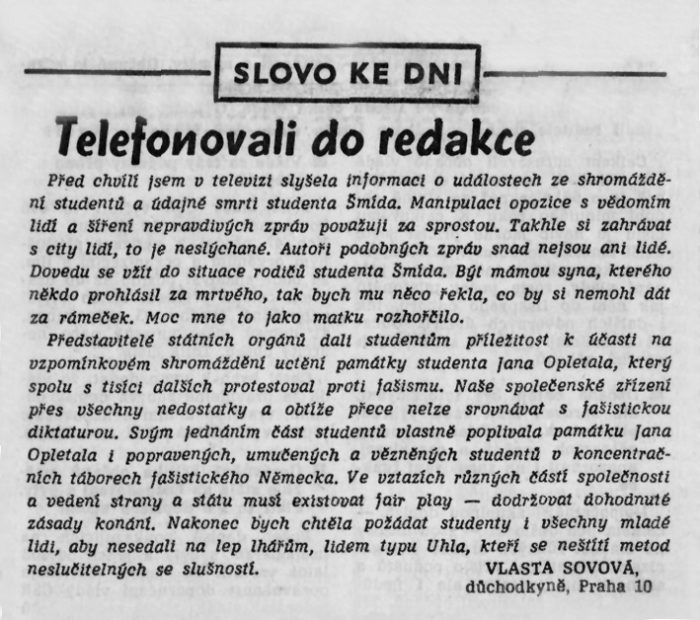Commentary
A letter published in the biggest national newspaper three days after the brutal crackdown on student demonstrations.
Rudé právo (The Red Justice) was the official newspaper of the Communist Party, in which the illusion of a dialogue with readers was provided by a section where letters from readers were published. But the only letters that were published were those that criticised the Party policy in the permissible extent or that were from various groups of workers, meant to create the impression that the “people’s voice” was identical with the views of the Communist Party. The brutal crackdown on the student demonstration on Friday, 17 November sparked disagreement within Czechoslovak society. Immediately after the weekend, therefore, articles condemning the demonstrators were published in the daily newspaper, among them several expressing the angry voices of readers who were meant to symbolise the population’s loyalty to the regime.
We do not know who Vlasta Sovová was or whether her letter was real. But her official text represents an ideological view of the events that many people shared. The letter argues primarily in terms of the fight against fascism, through which the Communist Party legitimised its rule and repression. The student demonstrations were held on the anniversary of the Nazi repression against Czech students in 1939, shortly after the start of the German occupation and in memory of student Jan Opletal, who was killed during student protests in 1939. The demonstration in 1989 was permitted as an official memorial of this event. For the students, however, this meant an opportunity to actively criticise the social and political situation in Czechoslovakia. After the students had finished marching in the official part of the demonstration in the city centre, they were severely beaten. The shock of the regime’s brutality marked the beginning of mass resistance against the communist government in Czechoslovakia (more in video We’re not children). But the assessment of the events was not of course unequivocal (as you can see in the Revolution in the regions video). The regime’s propaganda, however, tried to create the impression, via the letter from pensioner Vlasta Sovová, that the protesters were just isolated and misguided groups.

